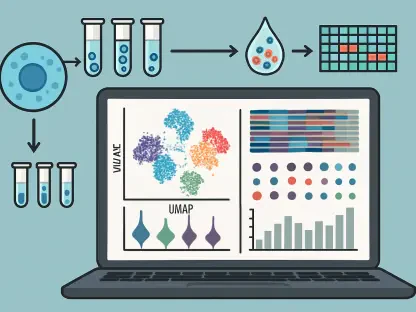In today’s fast-paced and competitive business landscape, workflow software has become an indispensable asset for organizations aiming to enhance operational efficiency. These tools not only automate routine tasks but also streamline complex processes, enabling businesses to operate more smoothly and productively. By leveraging advanced workflow management solutions, companies of all sizes can reduce manual errors, facilitate better collaboration, and achieve significant productivity gains. This exploration delves into the top workflow software solutions and their transformative potential for businesses.
Understanding Workflow Software
Workflow software is designed to assist businesses in designing, automating, and optimizing various processes within their organization. Such tools serve as the backbone for efficient task management, converting chaotic and disjointed operations into clear, well-structured workflows. By implementing workflow software, businesses can ensure that tasks are completed in a consistent and efficient manner, significantly enhancing overall productivity.
Advanced workflow management tools are equipped with features such as task automation, real-time collaboration, and seamless integration with other software systems. These features enable organizations to plan and assign tasks effectively, track progress in real time, and adjust workflows dynamically to address evolving needs. Ultimately, adopting workflow software leads to improved efficiency, reduced manual errors, and heightened productivity across the board.
Key Features to Consider
When evaluating workflow software options, it’s vital to prioritize customization and flexibility. Every business has its unique set of needs, and the chosen software must be adaptable enough to cater to these specific requirements. An intuitive workflow software solution allows for personalized settings and configurations, ensuring that it aligns perfectly with the company’s operational objectives and processes.
Real-time collaboration is another crucial aspect to consider. Effective communication among team members is essential for achieving better project outcomes, and workflow software with robust collaboration features can greatly enhance this aspect. By providing shared access to tasks, timelines, and updates, these tools facilitate smoother communication and coordination.
Automation capabilities are at the heart of workflow software, significantly reducing the need for manual input and minimizing the likelihood of errors. Automated workflows ensure that repetitive and routine tasks are handled effortlessly, freeing up valuable time for employees to focus on more strategic and creative initiatives. Furthermore, seamless integration with existing tools and systems within the organization is essential. This ensures that data flows uninterrupted across various software platforms, providing a holistic ecosystem that enhances overall efficiency.
Implementing Workflow Tools
To successfully implement workflow tools, rigorous planning and strategic execution are imperative. Begin by meticulously mapping out existing processes to identify inefficiencies and areas that necessitate improvement. Documenting current workflows provides a clear starting point and helps create a blueprint for the new system to achieve streamlined operations.
Training team members is another crucial component of successful implementation. Comprehensive training ensures that all users understand the new system’s functionalities and can effectively adapt to its use. Regular training updates and feedback sessions are equally important, promoting a culture of continuous improvement and smoother transitions.
Effective implementation further involves regular monitoring and iterative improvements. By continuously evaluating the performance of the workflow system, organizations can identify areas for enhancement and ensure that the system remains aligned with evolving business requirements. This proactive approach to refining workflows paves the way for sustained efficiency and productivity.
Enhancing Productivity with Advanced Features
Many advanced workflow software solutions offer powerful analytics and reporting capabilities, which provide valuable insights into workflow performance. By analyzing these reports, businesses can identify patterns, trends, and bottlenecks that may be hampering productivity. Data-driven decision-making becomes possible, enabling organizations to make improvements based on concrete evidence rather than conjecture.
Conditional logic is another advanced feature that significantly enhances workflow automation. By allowing for the creation of complex rules and conditions, tasks can be routed automatically based on predetermined criteria. This ensures that workflows adapt dynamically to various scenarios, improving overall efficiency.
Mobile accessibility is a significant feature that modern workflow software solutions offer. In today’s increasingly remote and mobile work environment, the ability to manage tasks and workflows on the go is invaluable. Mobile access ensures that team members can stay productive and informed, regardless of their location. This flexibility is particularly beneficial for businesses with remote teams or operations that require constant mobility.
The Future of Workflow Automation
The future of workflow automation is poised to be shaped by advancements in AI and integration with IoT devices. AI-powered automation has the potential to predict bottlenecks, optimize processes, and handle complex tasks with unprecedented efficiency. By utilizing machine learning algorithms, AI can anticipate workflow disruptions and provide proactive solutions, further enhancing productivity and operational efficiency.
Integration with IoT devices opens up new possibilities for real-time, data-driven workflows. As IoT devices generate vast amounts of data, integrating this data into workflow systems allows for automated actions triggered by real-time inputs. This integration can greatly enhance the responsiveness and adaptability of workflow systems, making them more intelligent and effective. Additionally, the trend towards low-code and no-code platforms is democratizing workflow automation, making it accessible to a broader audience, including individuals without extensive technical expertise. These platforms enable users to customize and automate workflows through intuitive, visual interfaces, lowering the barriers to entry and fostering innovation.
Industry-Specific Solutions
Different industries have unique workflow requirements, making it essential to select software tailored to specific industry needs. For instance, the healthcare industry may require workflow solutions that focus on patient management, appointment scheduling, and regulatory compliance. Conversely, a marketing firm might prioritize campaign tracking, client communication, and analytical metrics to measure success.
By selecting workflow software that aligns with industry-specific requirements, businesses can ensure they are maximizing their operational efficiency. Tailored solutions allow teams to focus on core tasks, generate more value, and achieve higher productivity. This strategic alignment empowers organizations to streamline their processes, ultimately improving their competitive advantage in the market.
Continuous Improvement and Adaptation
In today’s rapidly evolving and competitive business environment, workflow software stands as a crucial asset for organizations intent on boosting their operational efficiency. These sophisticated tools not only automate routine tasks but also streamline more intricate processes, allowing businesses to function more smoothly and effectively. Advanced workflow management solutions enable companies of all sizes to cut down on manual errors, facilitate enhanced collaboration, and realize impressive productivity improvements. By integrating these systems, businesses can focus on strategic initiatives rather than getting bogged down by repetitive tasks. This exploration takes a closer look at the leading workflow software solutions and examines their transformative potential for modern businesses. Through adopting these solutions, organizations can stay ahead of the competition, drive innovation, and better respond to market demands. Embracing workflow software has become integral for businesses aiming to enhance their efficiency and productivity while fostering a collaborative and error-free environment.









